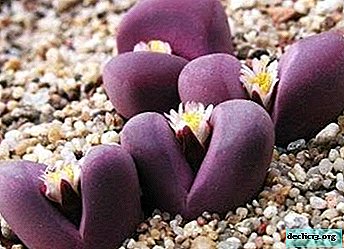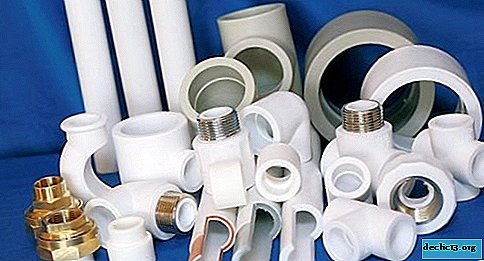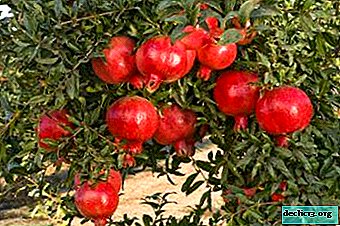If tuberous begonia gets sick - why it does not bloom and how to solve this and other problems
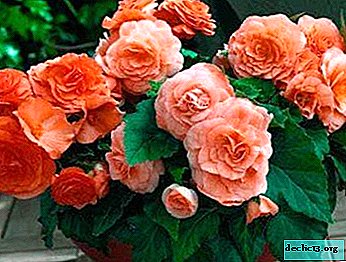
With proper care, the flowers in most cases do not get sick. Begonias are considered picky, but even they are sometimes susceptible to external factors that adversely affect their growth. Some diseases are easily treatable, and some lead to the death of the plant, but in spite of everything, it is necessary to fight them, because sometimes the disease is contagious.
Tuber begonia is a perennial plant that hibernates in winter, and from spring to autumn grows and blooms actively. It will not be able to be reborn for decades, but it reproduces well and easily by dividing the tuber - in place of one, several new children can be raised.
This species is distinguished by very beautiful flowers, they are very different: similar to roses, violets, fuchsias, etc.
Why are there problems and how to solve them?
It often happens that the plant begins to wither. It would seem that the conditions of care are respected, so what is the reason? In order to answer this question, it is necessary to consider in more detail the topic of diseases to which tuber begonia is susceptible.
Flowers and buds fall
Sometimes a flowering plant begins to drop buds. There may be several reasons for this:
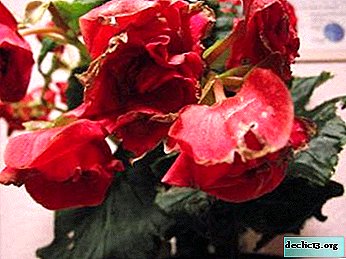 Insufficient air humidity.
Insufficient air humidity.- Too high or low temperature, or its differences.
- Lack of nutrition.
- Too hard water, or too abundant watering.
- It's time to rejuvenate begonia.
The conditions of the plant should be reviewed, perhaps not all of them are observed. If no deviations from the general requirements are found, then it is worth feeding begonia. You can also humidify the air, especially on hot summer days. Watering should be done only when the soil dries from above by 1 cm, otherwise there is a risk of watering the plant, which can lead to decay.
In summer, it is necessary to transplant and rejuvenate it by dividing the tuber. All wilted inflorescences are removed, and in the autumn flowering period it is recommended to cut off all the buds - so the begonia will gain strength, get stronger and in the next growing season will give more greenery and flowers.
ATTENTION! In flowering begonia, it is recommended to remove female inflorescences and leave only male ones. So the flowering will be more magnificent.Leaves twist
This occurs for several reasons, namely:
- Too plentiful watering.
- Lack of nutrition.
- Lack of moisture.
- Sensitivity to heat.
To cure the plant, you must adjust the humidity. To do this, you can put the pot in a tray with wet expanded clay. Do not spray begonia - she does not like this, and before watering, you need to check the soil and, if the substrate is wet, then you should not water it.
Twice a year, you need to feed the flower with a ready-made complex or potash selection. It should be borne in mind that there should be very little nitrogen in complex feeding. Begonia will feel good in summer at a temperature of +18 degrees, and in autumn and spring no higher than +14.
The place most suitable for this flower is the east or north side of the house, where direct sunlight that is harmful to it will not penetrate.
Foliage dries
 If begonia leaves dry, turn brown, then this is a signal that it needs additional moisture. To solve this problem, increase watering. At the same time, carefully observe that excess water does not stagnate in the pot. The best option would be drainage.Then the roots do not rot.
If begonia leaves dry, turn brown, then this is a signal that it needs additional moisture. To solve this problem, increase watering. At the same time, carefully observe that excess water does not stagnate in the pot. The best option would be drainage.Then the roots do not rot.
Also, for greater comfort, it is necessary to increase air humidity - put a container of water near the plant or spray the air around. But the main thing is not to overdo it, high humidity can trigger the development of fungal diseases.
IMPORTANT! It is necessary to ensure that water when spraying does not fall on the leaves and inflorescences - this can cause decay. If this happens, then the drops are removed from the plant with a napkin.No bloom
If begonia during the growing season refuses to bloom, then it is worth revising the conditions of its maintenance. After all, the absence of inflorescences is a signal that:
- Not enough feeding.
- Too dry air.
- Begonias are hot.
- Not enough strength for flowering.
In the period of active growth, the plant, in order to make it bloom, must be properly fed with mineral fertilizers. If this is not done, a weak begonia tuber due to lack of strength will not allow it to bloom. In order for the plant to bloom abundantly and beautifully next year, it is recommended to cut off inflorescences during the autumn bloom - so the tubers will gain more strength for the next growing season.
Adjusting humidity and watering can solve the flowering problem., but it is also recommended to add manganese or fungicides to the water.
ATTENTION! Some Dutch begonias are disposable. The flowering of such hybrids is caused by stimulation by hormones, after which the plant dies.Diseases and pests: description with photo
See below for photos of the main diseases and pests of tuber begonia.
Disease
Powdery mildew

Originally small whitish spots appear on the leaves, which then spread to the entire surface of the sheet. Affected leaves subsequently become brown in color and dry out.
Treatment:
- Spraying the plant with a solution of 0.05-0.1% of foundationazole, 0.05% of morstan or 0.1% of foundationazole.
- During the period of active growth, pollination with ground sulfur is carried out, or spraying with a 0.3-0.5% solution of colloidal sulfur.
- A copper-soap liquid is used (2 g of copper sulfate and 20 g of green or tar soap are dissolved in 1 l of water).
Gray rot

Hot, humid weather causes the formation of spores of fungal origin. At first white watery spots appear on leaves and flowers with an unpleasant gray coating. Pretty quickly they turn into brown wet rot. The stems rot and break, the leaves turn black and curl, mucus forms on the buds.
Treatment:
- Spraying with 1% Bordeaux liquid or a copper-soap mixture.
- Moderate watering and daily ventilation if begonia is in the greenhouse.
- With a very large lesion area, the fungus is sprayed with a solution of 0.2% euparen, 0.05-0.2% topsin, 0.05-0.1% baseazole, 0.05-0.1% BMK, 0.4% polycarbacin or 0.2% rovral.
Bacterial spotting

The formation of small watery spots appears on the bottom of the sheet.. Over time, they become brown, and the petioles and flowers turn black.
Treatment:
- Spraying with a 0.5% suspension of copper oxychloride.
- Affected plants are subject to destruction.
- The soil is disinfected.
- Processing is carried out with an interval of 12-14 days.
Ring spotting

The defeat of the tomato virus manifests itself in the form of yellow-green spots on the leaves, concentric lines, necrotic areas or bronze color. Aphids, thrips and other small pests are carriers of the disease.
Treatment:
- Removing insects and weeds.
- Sick plants are subject to destruction, because the virus can persist in tubers.
Pests
In addition to viruses and improper care, begonia can be susceptible to various insects. If measures are not taken in a timely manner, the plant may not only die itself, but also reward the contagion of its neighbors.
Nematode

White filamentous worms living inside tubers. Affected areas rot and die.
Treatment:
- Warming up the pots in autumn and spring (before planting) for 3-5 minutes at a temperature of 55 degrees.
- The affected parts (possibly the plant is completely) are removed and burned.
If calendula or marigold grows nearby, then this will scare off the nematodes.
Spider mite

This pest settles on leaves and stems, where it weaves a cobweb and lays there eggs of a greenish or muddy-white color. This parasite feeds on the juice of the plant. The higher the air temperature and less humidity, the faster the tick multiplies.
The leaves are initially covered with white dots, and then a thin web appears. After they turn yellow and fall off. The affected plant ceases to bloom, and with the widespread spread of parasites dies.
Treatment:
- Spraying infusion of onions, garlic or feverfew at least five times with an interval of seven days.
- A container with a small amount of turpentine or chopped garlic should be placed near the plant. Then the plant is covered with a bag, firmly pressing the edges to the pallet.
- You can use the infusion of potato tops (1.2 kg of green or 0.6-0.8 kg of dry tops must be insisted 3-4 hours in water).
- Also helps spraying infusions of black and dope belens.
Prevention
In order for the begonia not to be sick, it is necessary to observe conditions comfortable for it. Thermal and light conditions, humidity, timely watering and top dressing - all this is necessary for the plant for proper growth and abundant flowering. Also need to systematically inspect the flower for pests or the first signs of other diseases.
In addition, you can use special drugs that both treat and prevent possible diseases - fungicides. They have their own classification:
- Protective - treatment of healthy plants (Fundazol, Topaz, Maxim).
- Medical - treatment of already affected plants (Maxim, Vecta, Trichodermin).
- System - preparations absorbed by the plant. They are used both for prophylaxis and for treatment (Skor).
- Contact - affect only those parts of the plant on which they were applied (colloidal sulfur, copper sulfate).
- Chemical means for planting stock - treatment of bulbs, tubers and rhizomes before planting (Fitosporin-M). Read more about planting and subsequent care of tuberous begonia here.
If begonia is healthy and the growing season is successful, then there is no need for chemicals. If they are used for the prevention of diseases, care must be taken - their excessive use can adversely affect begonias.
Of course, it is impossible to prevent all diseases, but with the right and responsible approach, many of them can be avoided. But, in case of a begonia defeat, treatment should be carried out as soon as possible - it will depend on this whether the plant survives or dies.

 Insufficient air humidity.
Insufficient air humidity.



